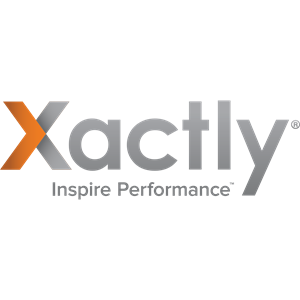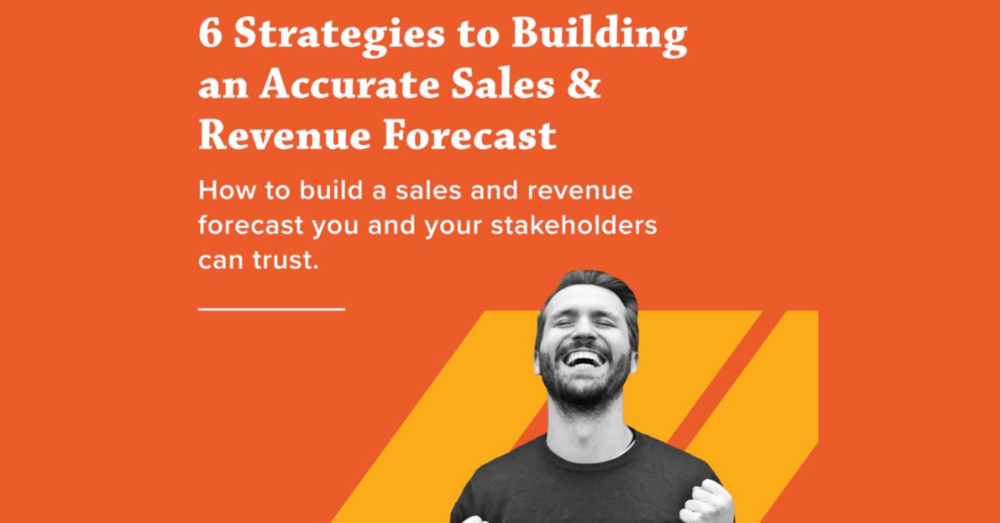(This article is based on an excerpt from the book by Aaron Ross and Jason Lemkin: From Impossible to Inevitable—Second Edition.)
So you want to start an outbound prospecting program, but you’re beginning from scratch. Before you jump in, here are four questions you need to answer for yourself:
- What’s the right starting model?
- How long will it take?
- How much will it cost?
- How much revenue can you generate?
Knowing the answers to these questions will help you make realistic plans and reduce delays and failures, so you can build it right the first time.
What’s the Right Starting Model?
Consider these four options, each with its pros and cons:
- Internal Team: Hire your own Sales Development Rep (SDR) team that is 100% dedicated to outbound prospecting. If you have the management capacity to hire and train someone, this is ideal. Pros: No one will know your ‘stuff’ better than internal people; it’s the best long-term solution for most companies and begins your sales Farm Team. Cons: It can be slower to find and train a great SDR, and it requires more management bandwidth.
- External Team (Outsourcing): Find an outsourcing service to do the prospecting for you. Outsourcing can be an interim step until you’re ready to build your own internal team. It can be an answer if you don’t have the bandwidth (or confidence) to hire and manage an SDR. Pros: it can be faster and simpler than hiring and requires less (but not zero) management attention. It lets you tap into a proven system. Cons: Outsourcing projects fail when buyers treat outsourcing as a ‘magic pill’ and have unrealistic expectations. Sometimes vendors over-promise and set the program up for failure. And when the leads come from outside the firm buyers sometimes waste them by not giving them sufficient attention.
- Parallel (Both): You start an outsourcing project (External Team) at the same time you’re building an Internal Team, to complement each other. Pros: You begin experimentation and learning immediately, and you achieve results sooner than if you just build your own team. Cons: Doing both is more expensive than either building the team inside or outsourcing. And it is more complex to coordinate.
- Scrappy: If you’re tight on budget (you only want to spend hundreds or a few thousand dollars) and time, so you can experiment with outbound in bits and pieces. Pros: Begin testing and learning with as little time or money as you have. Cons: Don’t expect to create predictable revenue this way until you commit a full person or resource to it.
How Much Revenue Can You Generate?
Let’s assume you hire one or more Outbound SDRs. After the startup phase of hiring, training, and ramping, expect this formula to hold.
Revenue Per Outbound SDR = # New Customers Per Year x Avg Outbound Deal Size
Estimating Number of New Customers per Month
At SaaS and differentiated companies, one well-trained Outbound SDR can set up 12-20 Discovery or Demo calls a month. Typically, 8-10 end up in the sales pipeline as Sales Accepted Leads (“SALs”).
The criteria are different for outbound deals than inbound leads. Make sure you are meeting with people who have the authority to buy. Make sure the prospect needs your product. And make sure the prospect is actively engaged in a buying process.
We typically see 20% of those SALs close. So in estimating baseline scenarios, you can assume a range of 1 or 2 new customers per month per Outbound SDR. Run scenarios for low and high estimates. Use the same number even if your SDR is prospecting to new divisions of current customers.
SALs per month can be as low as 1 per month for large deals in challenging niches or complex enterprises, or up to 15+ per month for highly transactional SMB sales.
Average Outbound Deal Size
Take the top 20% highest revenue customers, excluding outliers, and calculate their deal size or customer lifetime value. Use this as your Average Outbound Deal Size.
Outbound deal sizes are 3-10x larger than the average size of inbound sales because you target bigger opportunities and avoid smaller ones. For example, the average overall deal at Salesforce.com was about $5,000 in annual recurring revenue; the average outbound deal was 10x at $50,000.
Here’s an Example
You sell a differentiated product that your larger customers commonly pay $35,000 annually for. You build a team of 4 Outbound SDRs. After they’re ramped (assume six months), as a team they’ll create:
- Low Case: Yearly, they will add 384 qualified opportunities worth $13.4M in pipeline opportunities. Yearly, they will sign 48 more customers worth an extra $1.6M in recurring revenue. If customers stay five years: each year, you’ll add $8.4M in lifetime revenue.
- High Case: Yearly, they add 480 qualified opportunities worth $16.8M in pipeline per year. Yearly, they sign 96 more customers worth an extra $3.3M in recurring revenue. If customers stay five years: each year, you’ll add $16.8M in lifetime revenue.
How Much Will It Cost?
Salaries make up the bulk of an outbound team investment:
- Outbound SDRs: For each fully loaded (including benefits and overhead) SDR prospector budget $60,000 to $125,000. Geography plays a significant role: Do you need a college grad in Montana or someone in New York City with experience?The optimum initial team size is two or three Outbound SDRs that are high-quality “Builder” types. You can begin with up to six SDRs if you have a dedicated manager. Don’t expand the team further until you can measure their results in a dashboard and see systematically how ‘X effort’ leads to ‘Y results.’If you choose to use a recruiter, remember to include their fees in your budget.
- A Manager will cost $150,000 (full-time, fully loaded) or a pro-rated percentage of another executive’s compensation based on the amount of time they are involved.
- Sales Tools: Assume $4,000 per year per Outbound SDR for apps such as list-building, CRM, and sales enablement. Consultant Joe Toste observes, “Too many founders are penny wise and pound foolish. They’ll spend $10 million on product and salaries but less than $2,000 on sales enablement to get more out of that $10 million.”
- Training or consulting: Budget $3,000 to $150,000 depending on how complicated your sale is.
How Long Will It Take?
Creating an Outbound program is a complex task. You need to have realistic expectations. You won’t see results for at east eight months, and you won’t pay back your investment until year two.
Year 1: “The Build Year”
You’re building the program, funnel momentum, and pipeline. The flywheel’s begun turning. You should see revenue payback this year if you execute well, but usually not until months 8-12 (After the Salesfore.com example below, we break down why it takes at least eight months).
Year 2: “The ROI Year”
All the pipeline you built in year one begins to close. Now that the flywheel’s turning, and you’re starting off with pipeline, you should see a 3x-10x jump in revenue this year from year one, depending on how fast you’re growing the program.
Salesforce.com closed an exceptional $1M in annual recurring revenue in the first year of the outbound program. They closed $7M in the second year 2, a 7x jump. And $20M in the third year.
If you’re new to outbound, you’ll be sorely disappointed if you expect results in “a couple of months.” If you have a two-month sales cycle for inbound leads, expect four months for outbound deals but with much larger deal sizes.
Returning to the question of why it takes at least eight months to see results, here is a typical timeframe, using an Internal Team model to itemize how the 8 to 12-month lead time unfolds:
- Hire and onboard first SDR(s): 1-2 months. Now they have their heads straight.
- Train them, book the first ten meetings: +2 months. But many meetings are poor.
- Improve meeting quality and quantity: +1-2 months. Now, we see pipeline grow.
- Add a typical outbound sales cycle: +4-6 more months. Hallelujah!
Total: 8-12 months from your decision to do the program until you see deals closing every month. That feels like an eternity when you’re six months in and still haven’t seen revenue! It’s understandable executives might want to throw in the towel at that point. Don’t.
It’s not uncommon for programs targeting six-figure deals to see zero revenue for 10-12 months and then enter “The Million Dollar Club” with a big contract.
Outbound can work – it’s all about nailing a niche and having great people involved. Add six extra months to however long you think it’ll take. But when you get it working, it pays off. Could it pay off faster? Yes. Should you expect it to? No.
The External Team Option: Outsourcing Outbound
If you go with outsourcing, assume the timeframe stays the same (3-6 months to ramp pipeline, revenue in 8-12 months). To estimate cost and revenue, for simplicity, assume the cost and revenue are the same as hiring one Outbound SDR.
Here are some things to look for in an outsourcing partner:
- There are thousands of them because it’s easy to buy a copy of Predictable Revenue, a sales enablement tool, a database, and put up a shingle and make claims. Have them share case studies about how they created success.
- It’s easy to highlight wins. Ask how they handle challenging situations, as well as how they know a client is not a good fit.
- What are the metrics and funnel they focus on, all the way to your revenue?
- Phone-heavy providers:
- Pros: Can have a higher penetration rate on a list, good for reaching IT buyers.
- Cons: Can have a higher no-show rate because a good cold caller can convince anyone to jump on a call.
- Email-heavy providers:
- Pros: Can produce better quality meetings because prospects can do some research before agreeing to a call via email. They naturally generate some “untrackable” inbound leads.
- Cons: Can run through your lists faster if you’re not careful.
Executives Make or Break an Outbound Program
If you’re going to invest tens or hundreds of thousands of dollars in a program that won’t pay off for 8-12 months, you need your executives behind you. The main reasons outbound programs succeed, or fail are the actions executives take or do not take:
- The program is more likely to fail if executives are impatient, if they throw ‘someone’ at the project, whether they’re capable or not, if they under-invest or if they pay too little attention to the program.
- The program is more likely to succeed if executives demonstrate a sense of urgency, if they devote time and resources to finding the right people, if they are willing to invest, and if they demonstrate commitment by spending time overseeing the program.
If you are going to do outbound, make sure your executive team is on-board.
Get the Dashboard Right
Outbound isn’t about email templates. Or social media. Or fancy technologies, apps, or AI. Or the phone, motivation, or lists.
Outbound prospecting is about The Dashboard. Without an accurate dashboard, whether you’re building your internal team or using an outsourcing firm, you don’t know what’s working or not, or the ‘real’ results.
A frequent mistake executives make is they create dashboards that combine outbound prospecting metrics and inbound lead response metrics, measuring the inbound and outbound SDRs in the same reports. NO! They have to be separate else you won’t get clean outbound metrics.
Separate Inbound and Outbound Metrics
With outbound prospecting, accurate dashboards are harder to maintain because of a) inaccurate CRM/SFA usage and b) subjectivity in opportunity attribution and qualification. How often are your salespeople “doing favors” for their SDRs in accepting opportunities too early? Or are outbound SDRs taking credit for deals that weren’t really ‘outbound’?
Everyone has some version of:
- Outbound Activity Metrics (Email, Phone, Social)
- Outbound Results Metrics (Conversations, Meetings / Demos)
But do you also measure:
- The number of Qualified, AUDITED Outbound Opportunities (or Sales Accepted Leads). Every outbound opportunity needs to be reviewed for consistency and integrity.
- Outbound Pipeline Creation Rate. The dollar value of qualified pipeline created each month, and the trend up or down month over month.)
- Win Rates of Outbound Deals. Your goal is 20%.
Problems arise when leaders are overly focused on the quantity of activities (calls, emails, and meetings), and not paying enough attention to the quality of the output, or the trustworthiness of the dashboard itself. Dig into your outbound dashboard, and chances are 20%+ of it is illusion.
***
The book From Impossible To Inevitable, “the growth bible of Silicon Valley,” was co-authored by Aaron Ross (PredictableRevenue.com) and Jason Lemkin (SaaStr). It answers three questions: 1. Why aren’t you growing as you want / why has it plateaued? 2. How can you speed up growth? And 3. How can you sustain it?
The new 2nd edition contains pieces such as How Twilio Nailed A Billion-Dollar Niche, How Sagemount Triples The Value Of A Company, and Uncommon Approaches Of Hypergrowth CMOs. From Impossible To Inevitable can be found on Amazon here.
Excerpted with permission from the publisher, Wiley, From Impossible to Inevitable, Second Edition by Aaron Ross and Jason Lemkin. Copyright (c) 2019 by Pebblestorm, Inc. All rights reserved. This book is available wherever books and ebooks are sold.




